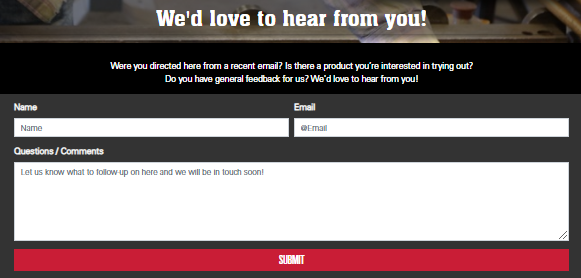03 Dec 12/03/2021
An Objective Look at OSHA 10 Safety Training
The Occupational Safety and Health Administration (OSHA) ensures safe and healthful conditions for workers by setting and enforcing standards and providing training, outreach, education, and assistance. Across the country, over 2,000 inspectors visit worksites daily to ensure the 130 million-plus American workers are safeguarded from hazardous workplaces.
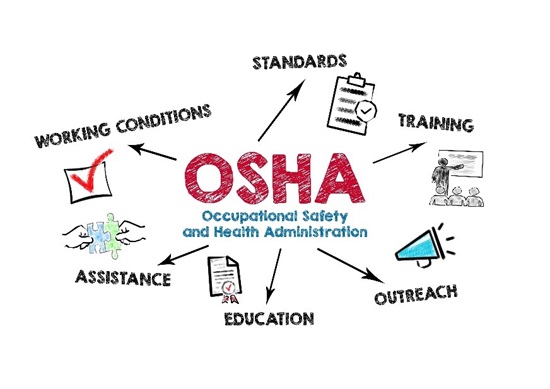
OSHA assists industries with safety resources in numerous ways.
OSHA also turns to those employees they safeguard and hopes to see many trained in proper safe work practices through their Outreach Training Program. They don't place any mandates on getting an OSHA card; however, they see it as an essential step in helping workers understand the hazards they will most likely encounter. In many states and cities, job creators make initial safety training required, so it only helps find employment, especially if you plan to work in the construction industry, the maritime industry, or at disaster worksites. From 2016 to 2020, there have been 5.21 workers trained, which means many workers are being enlightened on workplace safety!
Here we're going to tell you all about OSHA's 10-hour training. This training is for entry-level workers and provides basic safety and health information. There is a 30-hour training program, which offers workers a more in-depth look at safety responsibilities. We will cover that more in-depth in a future article. For now, let's ensure you understand everything that rolls up under the OSHA 10-hour training.
What is OSHA 10?

OSHA 10-hour training is a voluntary training program offered by the United States Labor Department. It is meant for entry-level workers who aren't in supervisory or director roles. Training is tailored to the needs of specific industries, and the content is geared toward hazard recognition and avoidance.
During the training, which occurs over two days and approximately 15 total hours, you'll learn the primary safety hazards and job-related safety issues. It also covers workers' rights, what the employer is responsible for, and how to file an OSHA complaint.
General Industry, Construction, and Maritime
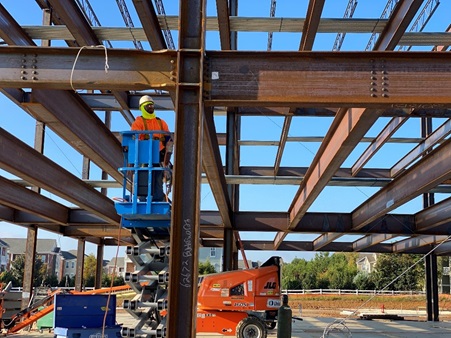
As highlighted in our opening, almost anyone can benefit from increased safety knowledge. For entry-level workers, learning about potential dangers on the job they may not have known about is valuable before arriving to work on their first day. There is also an advantage for the employer since studies have shown that OSHA 10-hour training can help reduce workplace accidents and avoid costly legal battles.
- The general industry training is considered the universal safety training that applies to manufacturing, warehousing, distribution and storage, healthcare, and other medium/high-risk industries.
- The construction training session is for entry-level construction workers are using tools, assembling frameworks, and handling various materials. According to the Burea of Labor Statistics (BLS), 827,100 construction laborers fit this description. We cover construction in-depth on our Construction Industry page, and highlight occupations and tasks performed across ten specific sub-industries.
- The maritime industry is designed for those working on a shipyard, including subcontractors, that repair and build ships.
Depending on your current employer or future employer, you will need to verify if you need general industry training or more tailored training for a specific industry. It's always a good idea to check first before completing either training. While the training is voluntary, many state governments and local jurisdictions require it to work for a construction company. It's essential to ask your employer which training is required before starting, as some states have different requirements for specific industries.
Training

OSHA 10-hour training is about keeping everyone safe on the job. Training helps mitigate those risks by educating employees on identifying, avoiding, and correcting potential hazards on the job. Here are some of the core subjects covered in the OSHA 10-hour, regardless of the specific industry:
- Personal Protective Equipment (PPE)
- Intro to OSHA
- OSHA standards
- Safety and health programs
You'll be guaranteed to learn about the above three. Then, each unique industry training starts to zero in on the industry hazards. Workers begin to receive additional training on hazards specific to their job. Construction spends time highlighting excavating and trenching, whereas the maritime industry covers machine guarding and lockout tag out at marine terminals. Here are some agendas created by trainers for each training and tailored subjects found in each:
- Construction – working at night, preventing runovers
- General Industry – bloodborne pathogens, recordkeeping, fire prevention
- Maritime – lockout/Tagout and hazardous materials at marine terminals
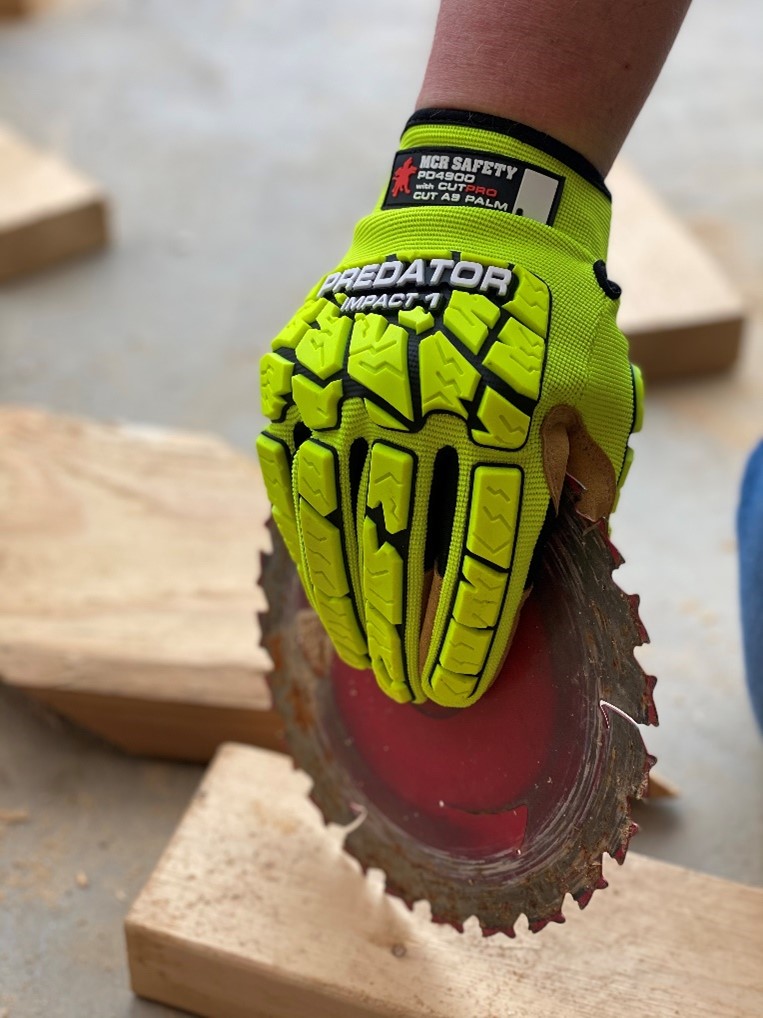
PPE is an area you'll learn about and is MCR Safety's specialty.
OSHA also has produced a full 270-page document on all training requirements found in OSHA standards. It will aid anyone hoping to understand better the topics touched on in OSHA training classes.
Construction Safety Course

There are over 7 million workers who find employment in construction, which means there are a lot of workers needing to be trained. If your business employs construction workers, requiring the OSHA 10-hour training program can go a long way to protect your business and employees. Training can go a long way in helping prevent the "fatal four" accidents: Falls, Struck by Objects, Electrocutions, and Caught In or Between accidents.
You'll still go over the general safety topics for the construction training. However, it will also involve more construction-related safety concerns. Here is a closer look at what you can expect to learn about:
- Fall Protection
- Electrical Safety
- Crane Safety
- Silica Safety
- Hand and Power Tool safety
Many of these topics have been highlighted in other MCR Safety articles, such as Essential Construction Tools and Hand Tool Safety and Shining a Light on Ladder Safety.
Online Course

A convenient way to complete the training is by doing it online in your own time. OSHA authorizes specific individuals who can provide online training. Here is a breakdown of those authorized to teach online both construction and general industry:
- AdvanceOnline – has been issuing 10-hours cards since the 90s'.
- CarrerSafe– has trained over one million students and claims to be the larges.
- ClickSafety – provides training to over 10,000 organizations. The ClickSafety OSHA 10 process is known for being one of the most efficient processes.
- PureSafety – is delivered by UL, a global company aimed at keeping people safe.
- Summit Training Source – will send you an official DOL-OSHA card within 2-3 weeks after completing OSHA 10.
- The University of South Florida – is known for being the southeast's leader in OSHA training.
- 360Training- has had users complete 4 million total courses. When it comes to the 10-hour training, 360 Training is one of the most respected and recognized OSHA training providers. 360 Training is entirely online and offers both construction and general industry training courses.
You will see many companies advertising an OSHA 10 online $25 discount code or an OSHA 10 promo code.
By any means, we do not want to steer you away from price savings. Our goal is only to stress that OSHA can't validate training for anyone outside of the above courses offered. After reading our next section, you'll understand why it's crucial.
Card and Certification
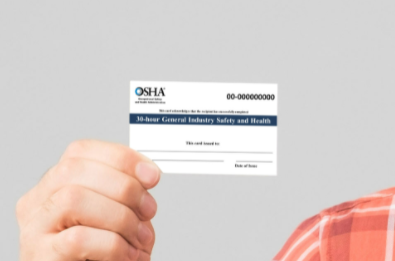
What is OSHA 10 certification? While the term "OSHA certified" is used often after completing and passing the training, it's important to note that OSHA doesn't certify workers who complete the 10-hour or 30-hour training since it is voluntary and not required. When you graduate from an authorized trainer, the US Department of Labor will issue a 10-hour Department of Labor (DOL)/OSHA completion card.
Even though it is not considered official certification, completing the training is increasingly required by more states and local governments. It can be important when applying for construction jobs to show that you've completed the training on your resume.
It's important to note that fake OSHA 10 cards are distributed out every day. As the uptick in demand for OSHA training services becomes more readily accepted by states and employers, it means fraud is on the rise too. The following image shows what the cards look like that have been issued after 2/1916.
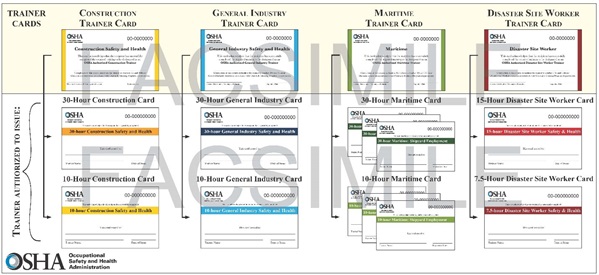
OSHA Card Hierarchy
The below images shows cards issued before the above date. Orange and yellow cards are two of the most documented fake cards still being passed off as legit.
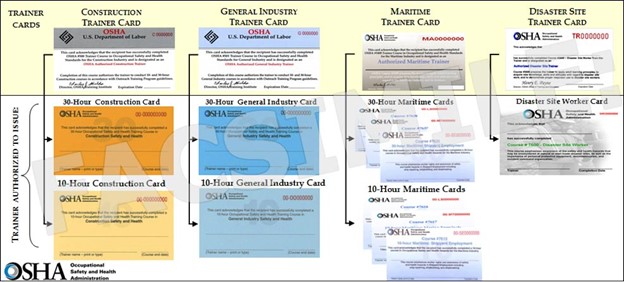
Cheat Seat
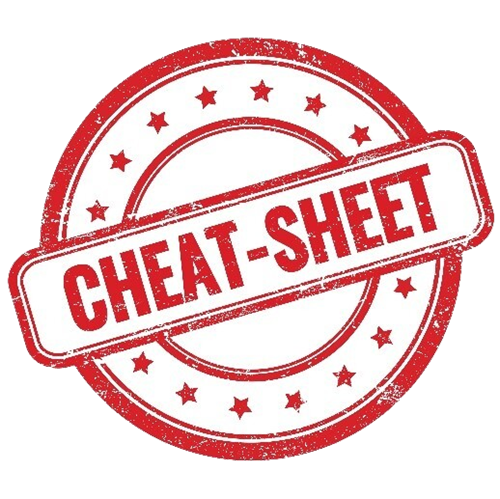
Preparing for OSHA 10 can be challenging, especially if it's been a while since you've been in the classroom. Creating a cheat sheet while preparing for the final test can help in the studying process. OSHA also provides pre-test questions and answers to help prepare for the final test.
Another test prep online that offers practice tests showing free questions and answers to practice before taking the final exam.
Common Questions

How to get OSHA 10 card free?
- An OSHA 10 card is not free. It's best always to be wary of anyone offering a free OSHA Wallet card. Some local and state governments require you to obtain an OSHA Wallet Card before working at specific sites, so checking with your employer about their requirements is always a good idea.
Does OSHA 10 expire?
- There is no expiration date for OSHA 10 card. However, retaking the training every three to five years is usually a good idea to refresh and stay updated on OSHA safety standards.
How long does OSHA 10 last?
- While there is no expiration date, some employers may not accept an OSHA 10 card over five years old.
What does an OSHA 10 test look like?
This PDF offered by OSHA shows you what a pre-test looks like for those wanting to familiarize themselves with the typical questions.
OSHA Trained and Certified
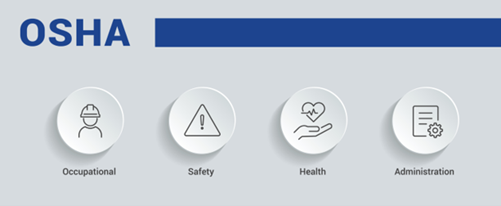
If you're in an industrial-related industry, like the construction or maritime industry, or looking to get into it, getting OSHA trained is not only vital to your success but can also keep you safe on the job.
Click the below image to leave us comments, questions, or any concerns.
For over 45 years, MCR Safety has proven to be a world leader in gloves, glasses, and garments. Whether it's learning safety in a classroom, cleaning the bathroom, or working at a construction site, we are there providing solutions to workplace hazards. It's all part of our commitment to protect people.
No matter your industry, we have the personal protective equipment you need.
Learn more about MCR Safety by checking out our most recent video. For more information, browse our website, request a catalog, find a distributor, or give us a call at 800-955-6887.
About the Author
Latest Articles





